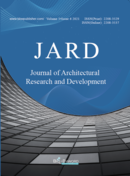Abstract
The inner-urban residential location choice is a topic of continuing interest in urban geography. However, not much research has been done on migrants’ rental location choices. Based on data from a questionnaire completed by 276 migrant renters in Guangzhou, this paper analyzes the demographics and social class characteristics of migrants, and the condition and location of housing preferred by this population. The results show that the migrants in Guangzhou mainly rent in the Center Business District (CBD) area (Tianhe District) and Huangpu, Panyu and Haizhu districts. The main reason for this choice of location choices is the houses’ convenience to their workplaces. A second reason is that nearby subways make travel convenient, for consumption and daily life, for children to go to school, and for access to large shopping centers/malls.
References
Wu W, 2006, Migrant Intra-Urban Residential Mobility in Urban China. Housing Studies, 21(5): 745-765.
Huang X, Dijst M, Weesep J, et al., 2017, Residential Choice among Rural–Urban Migrants after Hukou Reform: Evidence from Suzhou, China. Population, Space and Place, 23(4): e2035.
Zhu P, Zhao S, Wang L, et al., 2017, Residential Segregation and Commuting Patterns of Migrant Workers in China. Transportation Research Part D: Transport and Environment, 52: 586-599.
Rhodes A, DeLuca S, 2014, Residential Mobility and School Choice among Poor Families. Choosing Homes, Choosing Schools, 137-166.
Liao FH, Farber S, Ewing R, 2015, Compact Development and Preference Heterogeneity in Residential Location Choice Behaviour: A Latent Class Analysis. Urban Studies, 52(2): 314-337.
Basolo V, Yerena A, 2017, Residential Mobility of Low-Income, Subsidized Households: A Synthesis of Explanatory Frameworks. Housing Studies, 32(6): 841-862.
Rosen E, 2017, Horizontal Immobility: How Narratives of Neighborhood Violence Shape Housing Decisions. American Sociological Review, 82(2): 270-296.
Knox P, Pinch S, 2014, Urban Social Geography: An Introduction. London: Routledge.
Yu JH, Dong G, Zhang W, et al., 2015, Study on the Synergy between Intra-Urban Resident’s Migration and Job Change in Beijing. Journal of Geographical Sciences, 25(8): 978-990. DOI:10.1007/s11442-015-1214 -7.
Zheng X, Xia Y, Hui ECM, et al., 2018, Urban Housing Demand, Permanent Income and Uncertainty: Microdata Analysis of Hong Kong’s Rental Market. Habitat International, 74: 9-17.
Leung KM, Yiu CY, 2019, Rent Determinants of Sub-Divided Units in Hong Kong. Journal of Housing and the Built Environment, 34(1): 133-151. DOI:10.1007/s10901-018-9607-4.
